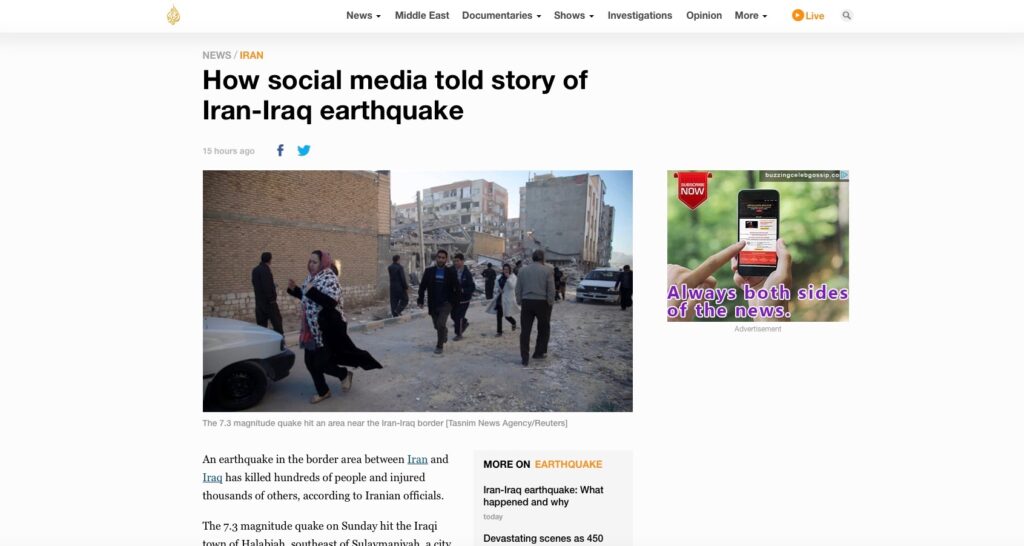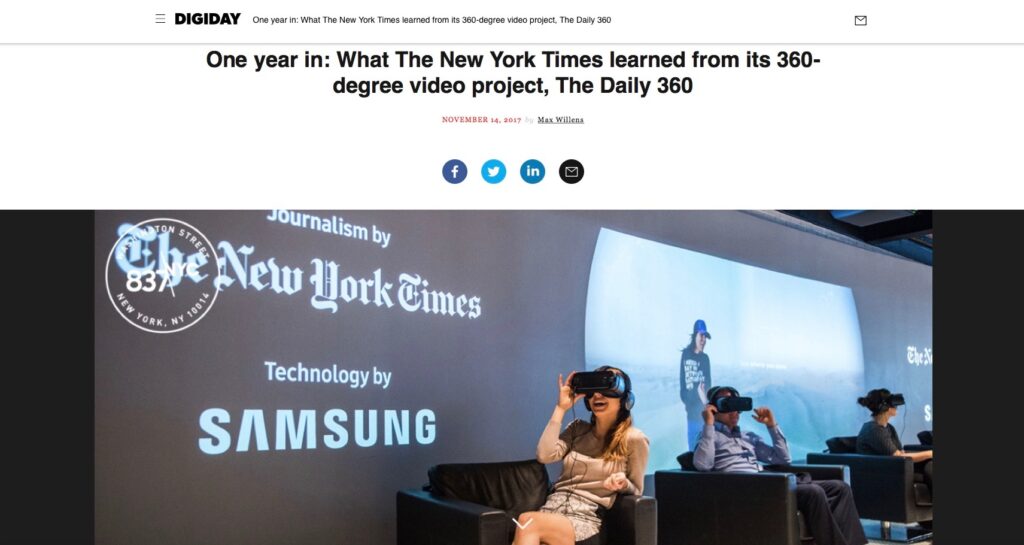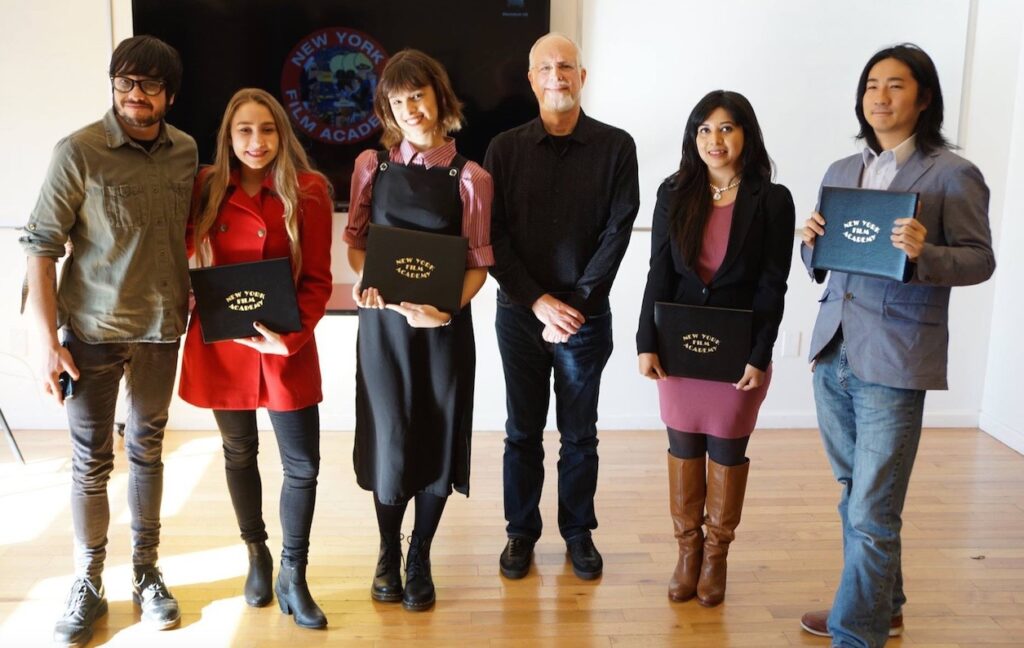The old model of “natural disaster reporting” revolved around sending a reporter (or reporters) into a devastated area, and hoping that they could put together a quick overview of “the situation.” But people on the ground, especially trained journalists, often have the best idea of what is going on. (Often knowing more than the government agencies tasked with helping impacted communities.) Now, through social media, that information is getting out faster than ever. But, a word of caution: “The first report is always wrong.” Yes, I’ve said that before, but it deserves repeating. This is why journalists need to be part of the editorial process, as opposed to well-meaning but often imprecise “citizen journalists.” It takes more than a camera to be a journalist…
Continuing the theme of new technology, The New York Times has been posting 360-degree videos daily for a year. And based on that experience, Digiday reports the Times has learned some important lessons. Chief among them is that location is often the key to digital engagement: Taking people someplace they want to see, in 360-degrees, generates views.
Among the places the Times cameras visited were the street outside Wrigley Field the moment the Chicago Cubs won their first World Series in 108 years (for our international readers, the Cubs play that strange American game called “baseball”), inside a NASA installation designed to mimic a Mars colony, and in the ghost towns that surround the Fukushima power plant that melted down six years ago. Personal profiles, on the other hand, were less successful. My favorite 360 video was the demolition of a old, especially hated highway bridge, dreaded by generations of New York City drivers and now in the process of being replaced by two modern spans.
I have to admit the next story strikes me as somewhat strange … I understand the attraction of podcasts (I started my career in radio, I get it), but some people are now listening to podcasts two-times or three-times the normal speed. According to BuzzFeed, this allows so-called “podfasters” to binge-listen to an entire series in just a matter of days. Maybe this is a generational thing, but I have to ask, “why?” Apparently the answer is: “to have more time to listen to more podcasts.”
Finally, last Friday saw the graduation of our latest group of 8-week Broadcast Journalism workshop students. That’s them in the picture below, with the rather “mature” Department Chair (me) in the center, and our always youthful Camera Instructor (Daniel Hernandez) on the left.
One of the new graduates was Ryo Matsuo — or, if we were in Japan, Matsuo Ryo. He wrote a heartfelt Facebook post about his NYFA experience. Here is an excerpt:
“When I started attending the class, I considered giving up and dropping out because I wasn’t confident about my skills and English. However, finally, I got it. I was able to graduate from class.
I appreciate having met wonderful friends and teachers … If I couldn’t see them, I couldn’t reach here.”
I appreciate having met wonderful friends and teachers … If I couldn’t see them, I couldn’t reach here.”
Thank you, Ryo-san. We’re going to miss you, and your classmates. Keep in touch!
by nyfa



